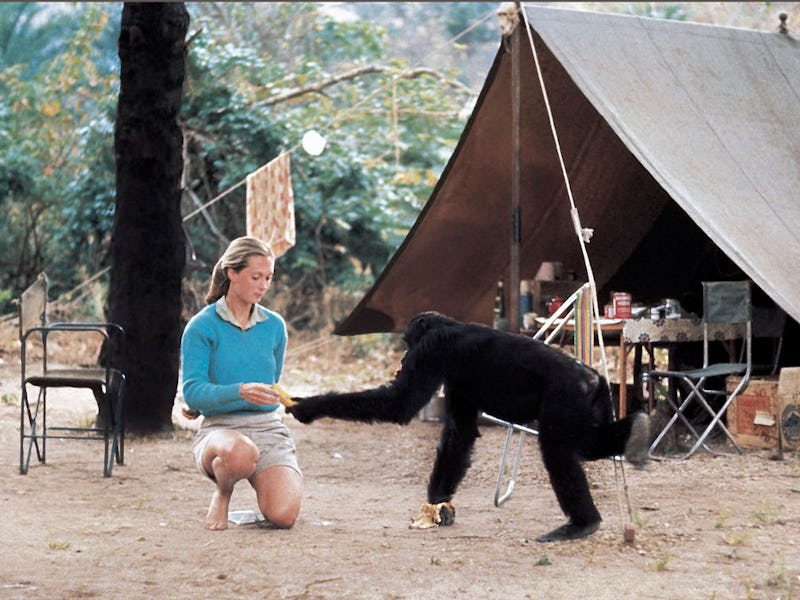Earth Day 2018: How Jane Goodall's Study of Chimps Changed Anthropology
It all started with a banana.

Google celebrated the work of Jane Goodall in the Google Doodle for Earth Day 2018. Her 55-year-long study of chimpanzees revolutionized the relationship between humans and animals, but all that work would be for naught if it wasn’t for one particular chimp.
When Goodall first went to Gombe Stream National Park in Tanzania to study chimpanzees in 1960, they ran away from her in fear. One chimp eventually stopped fearing her and would come to her camp looking for bananas. She called the chimpanzee David Greybeard due to his grey facial hair. Once Greybeard became comfortable with Goodall, he allowed her to groom him and observe him using tools, which shocked the science community at the time since humans were considered the only species to make use of tools.
“He was the very first chimpanzee that let me come close; he lost his fear,” Goodall said in a 2009 interview with Bill Moyers. “He had a wonderful, gentle disposition. He was really loved by other chimps. The low-ranking ones would go to him for protection.”
In 2013, Time released its list of “The 15 Most Influential Animals That Ever Lived,” which included David Greybeard. His entry described a special moment Goodall had with the chimp. When she offered him a red palm nut in her hand one day, he took the nut briefly and then dropped it back in her hand. When he did that, David also gently squeezed Goodall’s hand to reassure her that he understood her.
Goodall believes David Greybeard died of pneumonia in 1968. Her relationship with the chimpanzee showed the world that humans were not much different from their chimp cousins.
In 1977, Goodall founded the Jane Goodall Institute to protect chimpanzees and their environment. Her work at the institute grew to focus on conservation and animal welfare, which is why she was the subject of the Earth Day Google Doodle.